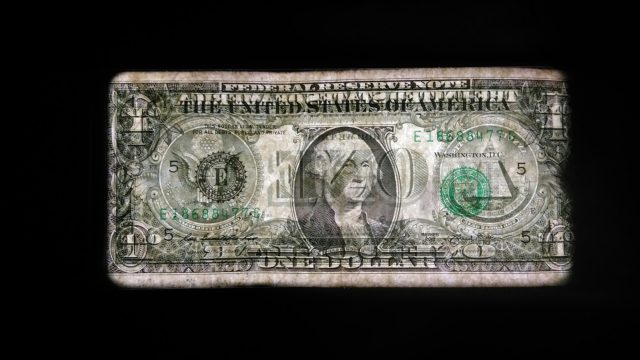Green labels? It's time to get real

The idea of life cycle assessment (LCA) has been around since the 1970s, but companies are only just beginning to tap into its real potential. Companies are realising that publishing environmental impacts for all their products across their whole life cycle (full product transparency) has the power to align the stars – to create a consistent approach to sustainability activity in every part of the business and to get everyone telling the same story. What your product designers focus on is the same as what your sales force talks about. What you say to your suppliers is the same as what you say to your customers. And what you report to stakeholders is the same as your marketing claims. The facts generated from the LCA form the basis for everything.
LCA is an established scientific method of assessing the environmental impacts of a product, including carbon footprint, resource use or toxicity. It studies all the impacts throughout the life of a product – from extraction and production of raw materials to manufacturing, transport, use, maintenance and end of life disposal. Evaluating these impacts enables informed decision-making about how to design, make and sell products.
The bigger picture
Full Product Transparency pushes a company to look beyond the direct impacts of its own operations. If a business makes a product, 60-90 per cent of its environmental impacts are likely to be outside the company’s immediate boundaries. Building a car, for instance, uses energy and raw materials. But according to the European Environment Agency, around 77 per cent of a car’s total footprint comes after it has left the factory – when it is driven around by consumers.
Many companies still don’t fully account for this kind of indirect impact, and instead focus 80 per cent of their efforts on managing 20 per cent of their impacts: the direct impacts. Most of today’s sustainability management concentrates on tools to manage operational impacts. Carbon management, for example, usually focuses on improving energy efficiency in the company’s operations, using renewables and reducing travel emissions. The emphasis is on corporate strategies and branding the company’s sustainability story; there is little if any mention of product impacts.
Many CEOs claim that sustainability is part of their company’s DNA. But it cannot be in the company’s DNA until the core thing in the company is radically re-designed: its products. Full Product Transparency helps you understand the true impact your products (no way to hide). It tells the full story, revealing the impacts in every phase of a product’s life.
Start by conducting an LCA on your most important or popular product. Be prepared for the unexpected, and be ready to change your strategy as a result.
Aligning action
The key to the LCA approach is that it provides a consistent focus for everyone involved in every part of the business – from product design and innovation to marketing, sales, procurement, and sustainability reporting. Here’s how it works:
- Design and innovation
The first thing that happens when identifying the key impacts of your product is that you can redesign it to reduce those impacts. What gets measured becomes visible. This immediately gives your designers a clear objective to guide the design of your products, focusing on reducing key impacts rather than ‘feel-good’ green gimmicks. Committing to performing an LCA for every new product before it is launched gives your designers strong signals about what the company wants from them. If a company didn’t have an full product transparency approach, design teams would start by coming up with a product that is ‘more sustainable’ without knowing what ‘more sustainable’ is. The brainstorming sessions come up with concepts like: ‘locally produced’, ‘natural’ ingredients or made using wind power. As a result, time and money can be channelled into product re-designs that sound bold and innovative, but make very little difference to the overall impact of the product. Full Product Transparency give design teams the opportunity to say ‘OK, we now know that 80 per cent of the impact is in this area, so we need to work on reducing that impact’. It’s a no brainer.
- Supply chain
The second thing that happens is that your product managers tell your purchasing colleagues to translate the LCA findings to your supplier requirements. The Full Transparency is passed on to the products of your suppliers (your raw materials) and enables you to set clear expectations of suppliers where it matters, asking them to come up with radical, practical innovations that will help you significantly reduce product impacts. Supply chain management becomes less complicated too. Instead of sending suppliers 700-question questionnaires with requests such as ‘do you have an environmental policy?’ or ‘have you signed up to the Global Compact?’, you can talk to them directly about how they can help you reduce the impact of your product. How transformative is a box ticking questionnaire compared with asking suppliers to respond just to your biggest environmental challenge?
- Marketing
Once your suppliers have helped your innovation colleagues to produce more sustainable products, it enables your marketing department to make environmental claims based on fact, not greenwash. The marketeers now have a ready-made ‘angle’ for the product, as they are promoting something that has been designed to be sustainable. They no longer have to come up with a post-justification for the product’s sustainability. Like everyone else in your company, the marketing team can now focus on communicating the big impacts that really matter. They have no need to come up with another label, the message is embedded in the product itself.
- Sales
Printing transparent and consitent information on marketing materials means your sales guys have no scope for sexing up stories, because the facts are right there in front of them and the customer. What is more re-assuring? If I tell you to trust me, that all my company’s products are good for the environment? Or if I tell you: this product has 5.7kgCO2 and this one has 12.9kgCO2. I am not going to patronise you, you have the hard facts – along with other factors such as design, price or service - you can use those facts to make a purchasing decision. Besides, sales staff can now enter certified, public data facts into tenders and sales material.
- Customers
Forget the consumers, my mum in the supermarket doesn’t care, she doesn’t have time to look at the facts. But there are other customers who do, especially these three types: governments who have committed to public procurement but don’t know how to make the decisions because product providers can’t give them the facts they need; B2B buyers such as architects designing green buildings; and retailers like Walmart driving carbon emissions reductions across its supply chain. The demand for plain facts as opposed to catchy labels or stretched claims can only increase. This is the interesting bit about stars aligning, when customers also align demanding full transparency then things happen. And if your company is tuned into that customer demand for transparency, then you have a huge competitive advantage.
The way forward
More companies are shifting their thinking from corporate to product sustainability. Slowly we are moving on from ‘The CSR decade’, which has been characterised by doing nice things and telling everybody about them. The new era, with full product transparency at its core, will be more about product sustainability, transparency and providing ‘just the facts’: embedding the story into products that speak for themselves. Corporate responsibility departments in many companies have ended up spending their time and effort on management processes that don’t focus on the biggest impacts.
Ramon Arratia, Sustainability Director of Interface


